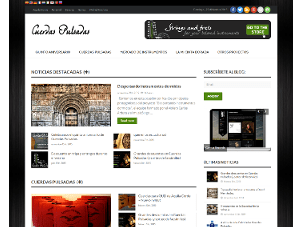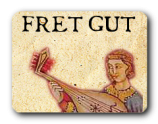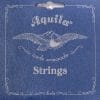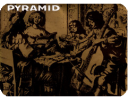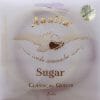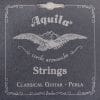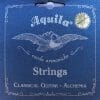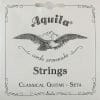We have on this occasion the pleasure of interviewing Miguel Angel Bautista, architect, who has achieved the application of current techniques to the development of parchment rosettes, both in its design and in its manufacture:

 The second is a little more complicated, but ensures the cleaning of the rosette and consists of assembling the rosette inside the instrument, for this the rosette must be in parts (levels) that are inserted into the instrument and by means of thread and dissecting forceps are attached from the upper to lower levels.
The parchment has some flexibility that allows it to pass through a hole slightly smaller than the size of the rosette (it’s a couple of millimeters), enough so that it can enter through the mouth of the instrument without damage. For this, the first level is glued directly to the lid with special glue for wood (titebond or gorilla) and the successive layers with epoxy resin, cyanoacrylate or the same glue for wood works well and they are joined by pulling the parts with the threads and accommodating in place with the help of tweezers.
The second is a little more complicated, but ensures the cleaning of the rosette and consists of assembling the rosette inside the instrument, for this the rosette must be in parts (levels) that are inserted into the instrument and by means of thread and dissecting forceps are attached from the upper to lower levels.
The parchment has some flexibility that allows it to pass through a hole slightly smaller than the size of the rosette (it’s a couple of millimeters), enough so that it can enter through the mouth of the instrument without damage. For this, the first level is glued directly to the lid with special glue for wood (titebond or gorilla) and the successive layers with epoxy resin, cyanoacrylate or the same glue for wood works well and they are joined by pulling the parts with the threads and accommodating in place with the help of tweezers.






Some facts about roses on plucked string instruments
We have various historical sources that include explicit references to the roses of vihuelas, guitars and lutes, which have allowed us to know in more detail not only more information about their shapes but also about their importance in the instrument construction process. Thus, for example, we know that there were fundamentally two types of roses, or bows, and that they were also used interchangeably in instruments such as the vihuela. In “ La polyphonie tolédane et son milieu des premiers témoinages aux environs de 1600 “, François Reynaud describes in the inventory of a Toledo luthier, Mateo de Arratia (June, 1575), where two vihuelas are cataloged with two different roses, one has “ deep bow ” while the other has a “ bow on top “. The instrument loop was a fundamental part of the instrument description, as seen in the inventories of belongings of people belonging to the nobility. Two inventories of the assets of the Count of Rivadabia, Luis Sarmiento de Castro, carried out in Valladolid in 1572 and 1580 are a great example:- Primeramente una dulzaina con sus fuelles y sus pesas de plomo
- Iten.Un laúd de marfil con sus varas de ébano en su caja
- Iten. Una arpa de dos órdenes
- Iten. Una vihuela de ébano con sus taraceas y su lazo en la misma tapa y arriba un letrero que dice Diego del Castillo sin puente.
- Iten. Otra vihuela de costillas de ébano con su lazo hondo sin puente
- Iten. Otra vihuela de costillas de ébano con el lazo de talla con un letrero que dice Diego de Portillo
- Mas una vihuela grande con las costillas de nogal y unas armas de los sarmientos y una taracea en las espaldas
- Iten. una guitarra de ébano con el lazo hondo con un letrero en la cabeza que dice Juan Rodríguez con su caja
- Iten un laudico con un caracol de nogal en la cabeza y un letrero que dice Juan de Villalpando
- Iten. Una vihuela de ébano alaudada con su lazo hondo y un letrero en la cabeza que dice Sebastián Rodríguez con su caja aforrada de fustán
- Iten una caja de vihuela vacía
 Multilevel rose made of wood and parchment (bow on the lid)
Giovanni Salvatori, s.XVI
Cite de la Musique, Paris
Multilevel rose made of wood and parchment (bow on the lid)
Giovanni Salvatori, s.XVI
Cite de la Musique, Paris
Technology applied to the production of parchment rosettes
Undoubtedly, there are currently tools for the design of these rosettes, both software and hardware, that facilitate and improve design and manufacturing. Miguel Ángel Bautista, 34 years old, Mexico City, tells us in this interview his research and results on this work:Miguel Ángel, can you tell us about your career and how is your approach to early music produced?I have training as a musician, I studied at the Faculty of Music of UNAM in the area of Classical Guitar, my teacher was Eloy Cruz, who is a guitarist, lute player and continuist in the ensemble La Fontegara, which is why I met and fell in love with early music and of the various instruments and the high degrees of refinement that they came to have. Later I studied a degree in Architecture at the Faculty of Architecture (UNAM) where geometry is one of the fundamental pillars, and I also learned the use of proprietary software and technological tools for design.
How did you start with the design of the roses?I started studying the baroque guitar as an instrumentalist, but since there was no one in my city who could make a rosette to my liking or as complex as the ones I had seen, I decided to make it on my own, experimenting with different forms, from the completely freehand cut , with punches and punches until I included current technologies, each with its strengths and weaknesses. so I combine things from the traditional system completely by hand with the possibilities in precision that laser cutting provides. So I found the results I was looking for.

What materials do you usually use to make the roses? How much time is spent on a rose?The material I use is genuine parchment (goatskin), epoxy and cyanoacrylate glues, and different tools such as very fine sandpaper, cutter, scalpel, punch, punches, dissection forceps, etc. I am also testing to use the wood, I hope in a few weeks to have some examples. The material I get with a factory in my city where they process the parchment until it is ready, it is mainly used for printing documents, but at my request they provide me with a parchment with more thickness, to withstand laser cutting, since it is very thin it burns and the detail cannot be reproduced. This I have been able to verify with the different tests that I have done to try to get a very fine detail in the designs. The time it takes to build a rosette varies according to the complexity but ranges from about 10 hours to 25 hours of work from its design stage to the construction of the rosette. Installation takes no more than 40 minutes on the most elaborate models.
How is the manufacturing process? (tools, steps, construction time ….)The process begins with the design of the different layers that will form the rosette, taking care of all the necessary dimensions so that with manipulation or heat in the laser cut, the material is not damaged, looking for symmetry, uniformity, etc. What follows is to make the cuts, usually the lower layers by laser and by hand using squares, curvigraphs, punches, cutting compasses, etc. the upper layers, because by hand, finer cuts can be made without damaging the material, and it also prevents the parchment from defoling with the laser heat. Here you can see an example video about laser cutting: Subsequently, the parchment is cleaned to eliminate the combustion residues that the laser makes and thus recover its natural color, then the different layers that form the levels are joined and once joined by levels, all the pieces are assembled until the rosette is fully formed. The pieces are joined using cyanoacrylate and epoxy resin glues, applied with a brush, fixing them together with tweezers. So far the only thing I use besides the parchment are gold colored pins to form the “Christmas tree” decorations
How is the rose attached to the instrument?To fix the instrument there are two ways: the first would be during construction, in the assembly the rosette is glued to the mouth, before closing the body of the instrument. However, there is a risk of staining, dirtying or damaging the rosette during the luthier’s own work process.
 The second is a little more complicated, but ensures the cleaning of the rosette and consists of assembling the rosette inside the instrument, for this the rosette must be in parts (levels) that are inserted into the instrument and by means of thread and dissecting forceps are attached from the upper to lower levels.
The parchment has some flexibility that allows it to pass through a hole slightly smaller than the size of the rosette (it’s a couple of millimeters), enough so that it can enter through the mouth of the instrument without damage. For this, the first level is glued directly to the lid with special glue for wood (titebond or gorilla) and the successive layers with epoxy resin, cyanoacrylate or the same glue for wood works well and they are joined by pulling the parts with the threads and accommodating in place with the help of tweezers.
The second is a little more complicated, but ensures the cleaning of the rosette and consists of assembling the rosette inside the instrument, for this the rosette must be in parts (levels) that are inserted into the instrument and by means of thread and dissecting forceps are attached from the upper to lower levels.
The parchment has some flexibility that allows it to pass through a hole slightly smaller than the size of the rosette (it’s a couple of millimeters), enough so that it can enter through the mouth of the instrument without damage. For this, the first level is glued directly to the lid with special glue for wood (titebond or gorilla) and the successive layers with epoxy resin, cyanoacrylate or the same glue for wood works well and they are joined by pulling the parts with the threads and accommodating in place with the help of tweezers.
What historical sources do you usually use?The main sources are the original instruments, photographs in books, in museums and some examples that can be found by browsing the internet. I also try to apply the principles of design to make my own models or help some clients to capture the idea that everyone has.
How do you think current tools help the rosette creation process?Technology is a medium that helps us work with great precision and reduces time on very specific tasks; however technology does not solve everything, there are many variants to consider and the way in which working models, drawings and dimensions are handled to these factors greatly affect the final result. We are in an era where we have many advantages, starting with access to information. The development and use of new technologies helps us to become more efficient and therefore I believe that it should be seen as one more tool that we have at our disposal and that We can use it to complement the skills that each one has developed. The tools I use for the design are software such as autocad, photoshop and coreldraw, once the design is done I print the layers that will be cut by hand, I glue them to the parchment to cut on the line, and for the lower layers I use a Laser cutter.





What types of rosettes do you make?I design and make rosettes for baroque or jarana guitars (the latter widely used in my country), based mainly on the models that contain the original instruments of the time, in architecture, or the personalized ideas of each client.

How can I contact you or order a rose?Through email or on facebook profile
- rosetas.miguel@gmail.com
- https://www.facebook.com/profile.php?id=100011149841987&fref=ts
Thanks for your time Miguel Ángel
- Roses in vihuelas. Alexander Batov
- GOLDBERG: Los dos Renacimientos de la Vihuelas by John Griffiths
- LA VIHUELA EN LA ÉPOCA DE FELIPE II. JOHN GRIFFITHS, UNIVERSITY OF MELBOURNE
- François Reynaud: La polyphonie tolédane et son milieu des premiers témoinages aux environs de 1600
- François Reynaud: Les luthiers toledans au XVI siècle.

